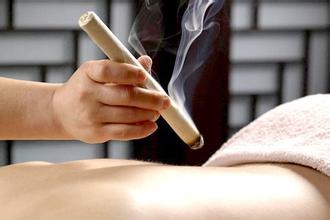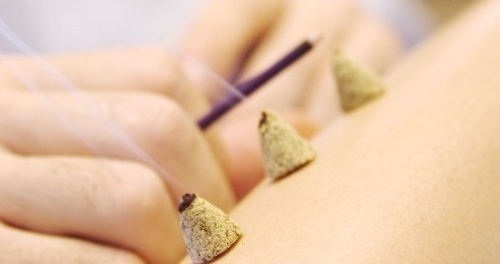Moxibustion
The word ‘Acupuncture’ is written as ‘针灸‘ in Chinese. This word actually contains two treatments: ‘针’ is commonly known as ‘Acupuncture’. ‘灸’ is ‘Moxibustion’. So as you can see, in traditional Chinese medicine (TCM) theory, ‘Acupuncture’ should be understood as ‘Acupuncture and Moxibustion’. Moxibustion is an essential part of TCM that uses ‘Ai Ye’ (mugwort leaves/ Artemisia vulgaris) as a tool to treat people who have a cold or stagnant condition in organs or relative meridians. The burning of moxa is believed to expel cold and warm the meridians, which leads to smoother flow of Qi and blood.

When moxibustion is applied, the practitioner need to light up a cigar shape stick or small butt made from the row ‘Ai Ye’ and then placed it either directly on the relative herb media (such like a piece of sliced ginger etc.) placed on the skin or held just above it over specific acupuncture points or meridians. ‘Ai Ye’ burns slowly that leads the therapeutic heat permeates the skin to affect the flow of ‘Qi’ and blood.
In Western medicine, moxibustion has successfully been used to turn breech babies into a normal head-down position prior to childbirth. A landmark study published in the Journal of the American Medical Association,1998 indicated that up to 75% of female suffering from breech presentations before childbirth had fetuses that rotated to the normal position after receiving moxibustion at an acupuncture point named as ‘Zhiyin’.

‘Moxibustion is a specialist technique demanding skilled clinical judgement and is contraindicated in certain cases. The easiest way to ensure your practitioner is properly trained is by visiting a British Acupuncture Council (BAcC) member’ —— British Acupuncture Council.
